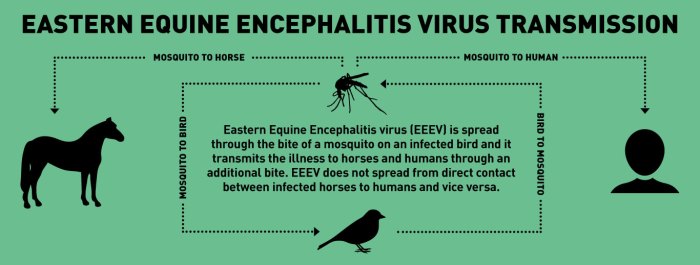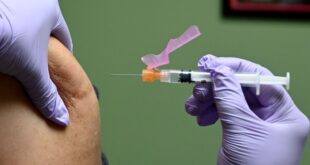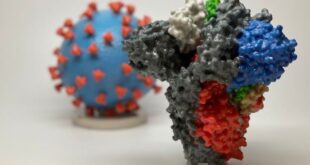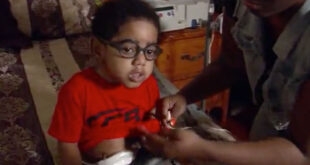New York confirms its first case of EEE since 2015. What to know about the virus. The recent confirmation of Eastern Equine Encephalitis (EEE) in New York has sparked concern, reminding residents of the potential threat this mosquito-borne virus poses.
EEE, a rare but serious illness, can cause severe neurological damage, and even death. Understanding the virus, its transmission, and how to protect yourself is crucial, especially as the mosquito season intensifies.
The virus is spread through the bite of infected mosquitoes, primarily those belonging to the Culex genus. While the virus can affect both humans and animals, it is most commonly found in horses, birds, and other mammals. The symptoms of EEE can range from mild flu-like illness to severe neurological complications, including encephalitis, a dangerous inflammation of the brain.
What is EEE?
New York has confirmed its first case of Eastern Equine Encephalitis (EEE) since 2015, prompting concerns about the potential spread of this dangerous virus. EEE is a rare but serious mosquito-borne disease that can cause inflammation of the brain.
While the recent case in New York is a reminder of the importance of taking precautions, understanding EEE and its transmission is crucial to preventing further infections.
The Virus
EEE, or Eastern Equine Encephalitis, is a viral disease caused by the Eastern Equine Encephalitis virus (EEEV). The virus is classified as an arbovirus, meaning it is transmitted by arthropods, specifically mosquitoes.
Transmission of EEE
EEE is spread through the bite of an infected mosquito. Mosquitoes become infected when they feed on an infected animal, such as a bird. The virus then replicates within the mosquito and can be transmitted to humans or other animals through subsequent bites.
Types of Mosquitoes that Transmit EEE
Several types of mosquitoes can transmit EEE, but the most common culprits are:
- Culexmosquitoes: These mosquitoes are known to breed in stagnant water, such as marshes, swamps, and flooded areas.
- Aedesmosquitoes: These mosquitoes are often found in urban areas and are known to transmit other diseases like dengue fever and Zika virus.
Geographic Distribution of EEE
EEE is primarily found in the eastern and central United States, particularly in areas with large populations of mosquitoes and birds. The virus has been reported in states such as Massachusetts, New York, Connecticut, and Florida. However, cases have also been reported in other parts of the country, including the Midwest and the West Coast.
Symptoms of EEE

The symptoms of EEE can vary depending on the severity of the infection. It’s important to be aware of the different stages and seek medical attention immediately if you suspect you or someone you know has contracted the virus.
Mild EEE
Mild EEE symptoms typically resemble a mild flu and often go unnoticed. These symptoms usually appear within 4 to 10 days after being bitten by an infected mosquito.
- Fever
- Headache
- Chills
- Muscle aches
- Fatigue
- Nausea
- Vomiting
- Diarrhea
Severe EEE
Severe EEE is a serious condition that can lead to brain damage, coma, and even death. These symptoms typically appear within 10 to 14 days after being bitten by an infected mosquito.
- High fever
- Stiff neck
- Encephalitis (inflammation of the brain)
- Seizures
- Disorientation
- Coma
- Paralysis
- Death
Incubation Period of EEE, New York confirms its first case of EEE since 2015. What to know about the virus.
The incubation period of EEE is the time between being bitten by an infected mosquito and the onset of symptoms. This period can range from 4 to 10 days for mild cases and 10 to 14 days for severe cases.
Diagnosis and Treatment
Diagnosing EEE involves a combination of clinical assessment and laboratory testing. It’s important to note that EEE is often difficult to diagnose, as its symptoms can resemble other illnesses.
Diagnostic Methods
The initial diagnosis usually relies on a patient’s symptoms and travel history. For example, if someone has recently been in an area with EEE activity and experiences symptoms like fever, headache, and stiff neck, EEE may be suspected. However, to confirm the diagnosis, laboratory testing is crucial.
- Blood Tests:Blood samples are taken to detect the presence of EEE virus antibodies. These antibodies are produced by the body’s immune system in response to the virus.
- Cerebrospinal Fluid (CSF) Analysis:A lumbar puncture is performed to collect CSF, the fluid that surrounds the brain and spinal cord. The CSF is tested for the presence of the virus or its antibodies.
- Brain Imaging:Techniques like MRI or CT scans may be used to rule out other conditions and assess the severity of brain inflammation.
Treatment Options
Currently, there is no specific antiviral treatment for EEE. The focus of treatment is on supportive care to manage the symptoms and complications.
- Supportive Care:This includes managing fever, providing fluids, and addressing neurological symptoms.
- Respiratory Support:In severe cases, patients may require mechanical ventilation to assist with breathing.
- Anti-Seizure Medications:These medications may be used to control seizures, a common complication of EEE.
Vaccines and Antiviral Medications
While there is no specific antiviral treatment for EEE, there is a vaccine available for horses. This vaccine helps protect horses from EEE infection, which is important for preventing the spread of the virus. Unfortunately, there is no vaccine available for humans.
However, research is ongoing to develop a human vaccine. Antiviral medications have not been proven effective in treating EEE.
Risk Factors and Prevention: New York Confirms Its First Case Of EEE Since 2015. What To Know About The Virus.
While EEE is a serious illness, the risk of contracting it is relatively low. However, certain individuals are at higher risk than others, and there are steps everyone can take to reduce their chances of being infected.
Risk Factors
Individuals who spend extended periods outdoors, particularly during the peak mosquito season (typically from late summer to early fall), are at increased risk of contracting EEE. This includes:
- People who work outdoors, such as farmers, landscapers, and construction workers.
- Individuals who enjoy outdoor activities, such as hiking, camping, and fishing.
- Children, as their immune systems are still developing.
- Elderly individuals, as their immune systems may be weakened.
Prevention
The most effective way to prevent EEE is to avoid mosquito bites. This can be achieved through a combination of personal protective measures and mosquito control efforts.
Mosquito Control Methods
| Method | Description | Effectiveness |
|---|---|---|
| Eliminate Standing Water | Remove any containers that can hold water, such as old tires, buckets, and flower pots. | Highly effective in reducing mosquito breeding grounds. |
| Use Mosquito Repellents | Apply repellents containing DEET, picaridin, or oil of lemon eucalyptus to exposed skin and clothing. | Effective in repelling mosquitoes. |
| Install Mosquito Nets | Use nets over windows and doors, especially during peak mosquito hours. | Provides a physical barrier against mosquitoes. |
| Drain Standing Water | Empty birdbaths, wading pools, and other sources of standing water regularly. | Reduces mosquito breeding sites. |
| Control Mosquito Populations | Contact local mosquito control agencies for information on available services. | Effective in reducing overall mosquito populations. |
Personal Protective Measures
| Measure | Description |
|---|---|
| Wear Light-Colored Clothing | Mosquitoes are attracted to dark colors. |
| Cover Exposed Skin | Wear long pants, long-sleeved shirts, and socks to minimize exposed skin. |
| Avoid Peak Mosquito Hours | Limit outdoor activities during dawn and dusk, when mosquitoes are most active. |
| Use Mosquito Repellents | Apply repellents containing DEET, picaridin, or oil of lemon eucalyptus to exposed skin and clothing. |
| Install Mosquito Nets | Use nets over windows and doors, especially during peak mosquito hours. |
Public Health Response
The confirmation of the first EEE case in New York since 2015 has prompted a swift and comprehensive public health response. Health authorities are working diligently to monitor the situation, manage potential outbreaks, and protect the public.
Public Health Surveillance
Public health surveillance is crucial for tracking EEE cases and understanding the spread of the virus. This involves a multi-pronged approach, including:* Case Reporting:Health care providers are required to report any suspected EEE cases to the local health department.
Mosquito Surveillance
In this topic, you find that 1st and 10 Week 4 Highlights is very useful.
Mosquito trapping and testing are conducted to monitor the presence and activity of EEE-carrying mosquitoes.
Data Analysis
Health authorities analyze case data to identify trends, patterns, and potential risk areas.
- The New York State Department of Health (NYSDOH) maintains a comprehensive EEE surveillance program.
- This program involves collaboration with local health departments, mosquito control agencies, and other stakeholders.
- The NYSDOH also provides guidance and resources to health care providers and the public on EEE prevention and management.
Role of Health Authorities
Health authorities play a critical role in managing EEE outbreaks and protecting public health. Their responsibilities include:* Investigating Cases:Health officials conduct thorough investigations of confirmed EEE cases to identify potential sources of infection and transmission pathways.
Public Education and Outreach
Health authorities disseminate information to the public about EEE, its symptoms, prevention measures, and the importance of mosquito control.
Coordinating Response
Health officials coordinate with local, state, and federal agencies to ensure a coordinated and effective response to EEE outbreaks.
- The Centers for Disease Control and Prevention (CDC) provides guidance and resources to state and local health departments on EEE prevention and control.
- The CDC also conducts research on EEE and other mosquito-borne diseases.
Historical Context
The recent confirmation of an EEE case in New York, the first since 2015, raises concerns about the potential for another outbreak. While the 2015 outbreak was relatively small, it serves as a reminder of the threat posed by this virus.
Comparison with the 2015 Outbreak
The 2015 EEE outbreak in New York was characterized by a limited number of cases, primarily concentrated in the eastern part of the state. The outbreak was declared over in October 2015. The current situation differs from the 2015 outbreak in several ways.
The recent case was identified in a different region of the state, highlighting the potential for widespread transmission. Additionally, the current climate conditions, with warmer temperatures and increased rainfall, may be conducive to mosquito breeding and virus transmission.
Factors Contributing to EEE Reemergence
Several factors can contribute to the reemergence of EEE, including:
- Climate Change:Warmer temperatures and increased rainfall create favorable conditions for mosquito breeding and virus transmission.
- Changes in Land Use:Urbanization and deforestation can alter mosquito habitats and increase the risk of EEE transmission.
- Increased Travel:Increased travel can facilitate the spread of EEE to new areas.
- Mosquito Control Efforts:Inadequate mosquito control efforts can contribute to the spread of EEE.
Significance of the Recent Case
The recent EEE case in New York is a significant event in terms of public health preparedness. It serves as a reminder of the importance of ongoing surveillance and prevention efforts to minimize the risk of outbreaks. The case also highlights the need for public awareness about EEE and its potential consequences.
Research and Future Directions
The emergence of EEE in New York after a period of relative inactivity underscores the importance of ongoing research and a proactive approach to managing this disease. Research efforts are continuously refining our understanding of EEE, leading to potential breakthroughs in prevention and treatment.
Potential Areas for Future Research
Future research on EEE holds immense promise in advancing our understanding and control of this disease. Researchers are actively investigating a range of areas, including:
- Developing a Vaccine:Currently, there is no vaccine available for EEE in humans. Research is underway to develop an effective and safe vaccine that could provide long-term protection against the virus. This would be a significant advancement in preventing EEE and its potentially devastating consequences.
- Exploring New Treatment Options:While there is no specific treatment for EEE, supportive care remains crucial for managing symptoms and improving patient outcomes. Research is focused on exploring novel antiviral therapies and immunomodulatory strategies that could directly target the virus or enhance the body’s immune response.
- Understanding EEE Transmission Dynamics:Investigating the intricate pathways of EEE transmission is crucial for developing effective control strategies. Research aims to better understand the role of mosquito species, environmental factors, and animal reservoirs in EEE transmission. This knowledge is vital for targeted mosquito control and prevention efforts.
- Improving Surveillance and Monitoring:Enhanced surveillance and monitoring systems are essential for detecting EEE outbreaks early and implementing timely public health interventions. Research focuses on developing more sensitive diagnostic tools and establishing robust surveillance networks to track EEE activity across different geographic regions and populations.
Importance of Continued Public Health Efforts
Continued public health efforts are critical to prevent and control EEE. These efforts involve:
- Mosquito Control:Targeting mosquito populations is a cornerstone of EEE prevention. This involves using a combination of strategies, including larvicides to control mosquito larvae, adulticides to kill adult mosquitoes, and public education campaigns to encourage mosquito avoidance.
- Public Awareness and Education:Raising public awareness about EEE and its risk factors is crucial for empowering individuals to take protective measures. Public education campaigns can provide information about symptoms, prevention strategies, and the importance of seeking medical attention promptly.
- Surveillance and Reporting:Effective surveillance and reporting systems are essential for monitoring EEE activity and detecting potential outbreaks. This involves prompt reporting of suspected EEE cases by healthcare providers and public health officials.
Concluding Remarks
The recent EEE case in New York serves as a stark reminder of the importance of mosquito control and personal protective measures. While EEE is rare, its potential severity demands vigilance. By understanding the risks, taking precautions, and staying informed about public health recommendations, individuals can significantly reduce their risk of contracting this serious illness.
Key Questions Answered
What are the most effective ways to control mosquitoes?
Effective mosquito control methods include eliminating standing water, using mosquito repellent, and installing mosquito netting.
How long does it take for EEE symptoms to appear?
The incubation period for EEE is typically 4 to 10 days, but it can range from 2 to 14 days.
Are there any treatments available for EEE?
Unfortunately, there is no specific treatment for EEE. Treatment focuses on managing symptoms and providing supportive care.
 CentralPoint Latest News
CentralPoint Latest News




